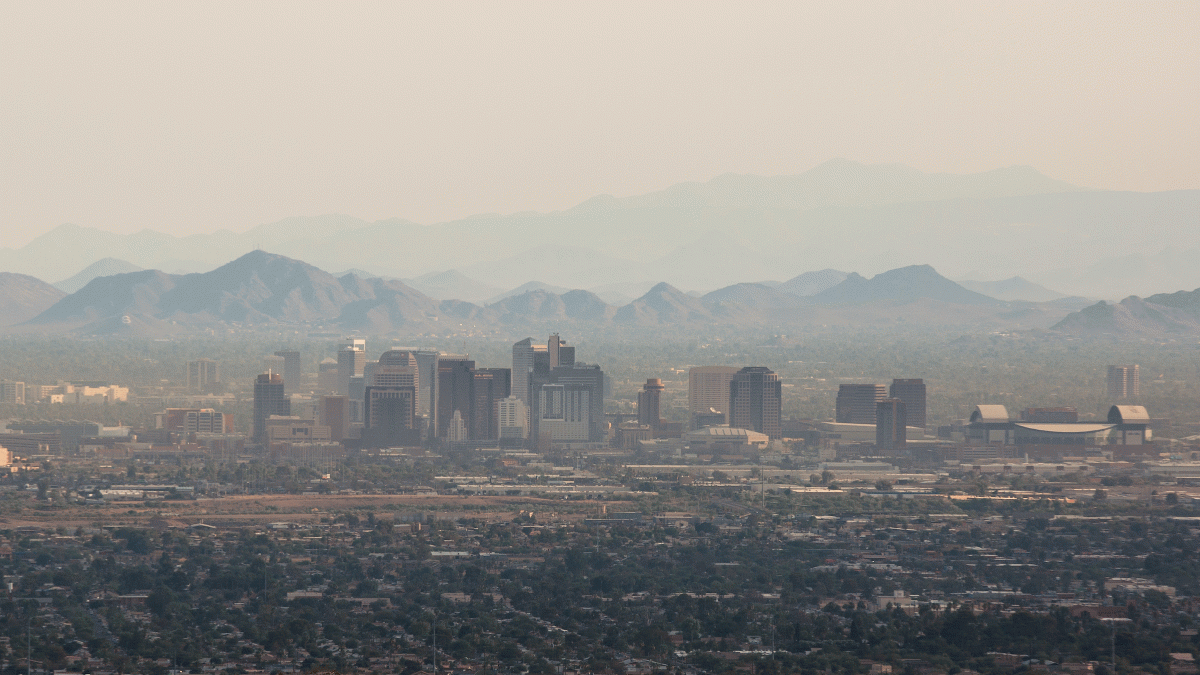Challenges to our planet can overwhelmingly command the headlines: climate change, massive population increases, dwindling resources.
But with every crisis comes an opportunity for creativity — innovative responses that have the potential to improve our lives and change how we interact with the ecosystem and with one another. And in Phoenix and other “extreme” cities, there is growing urgency to find those solutions.
Arizona State University’s Thought Huddle podcast explores such ideas in its latest episode, “Hot and Habitable: Creating Sustainable Cities.”
Host Mary-Charlotte Domandi talks with three ASU sustainability experts on ways to make urban spaces more livable for the long term: architect Jack DeBartolo, a faculty associate in The Design School at ASU’s Herberger Institute for Design and the Arts; Elizabeth Wentz, dean of social sciences in the College of Liberal Arts and Sciences and a professor in the School of Geographical Sciences and Urban Planning; and Wellington “Duke” Reiter, an architect, urban designer and executive director of ASU’s University City Exchange.
Each of these experts offers their insights into both the challenges we face and the concrete responses that can drive change. Consider one idea shared by DeBartolo to create shade with solar arrays and make a 15-acre area of downtown Phoenix more habitable year-round: “The design concept was to put this shaded pavilion a hundred feet above the ground to create a real pedestrian environment, an outdoor room of sorts, a real civic space.” Though this was not produced, DeBartolo is optimistic that the future will include designing spaces that “are both pragmatic and poetic.”
With a focus on resiliency, Wentz notes that this research often involves looking at long-term stresses such as population growth, drought and high heat: “How can we adapt and improve our living conditions so that the community is stronger overall,” she asks. One of her answers is more compact cities where commuting is limited and where people live and work “without spending an hour and a half driving to get to their jobs.”
For his part, Reiter summarizes the challenge ahead: “The evidence about where things are moving is so obvious. How do we rally the capacity to act? That’s really the big question around sustainability, resiliency and climate change.”
Find more episodes at thoughthuddle.com.
Top photo by Deanna Dent/ASU Now
More Environment and sustainability

New study on Arctic’s ‘Last Ice Area’ highlights the urgency for reducing warming
The Arctic’s “Last Ice Area” — a vital habitat for ice-dependent species — might disappear within a decade after the central Arctic Ocean becomes ice-free during summer, which is expected…

ASU fire expert Stephen Pyne on learning to live alongside fire
Stephen Pyne is having a busy retirement. On top of caring for chickens, sheep and citrus on his urban farm in Queen Creek, Arizona, the Arizona State University professor emeritus is being called on…

New interdisciplinary research highlights wildfire impacts on water and ecosystems in arid regions
As wildfires increasingly threaten arid regions, a new conceptual framework developed by a team of researchers offers a fresh perspective on the relationship between fire, water quality and ecosystem…
